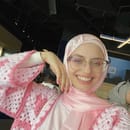Note: The quotes in this article have been translated from Arabic to English. Recognizing the challenges of translation, I have done my best to ensure accuracy while conveying the original meaning.
“Palestine is promised freedom and justice,” Abdel Salam Shehada, director of the film To My Father said on Sept. 29, at the 17th annual Toronto Palestine Film Festival.
“It is not possible for seventy-six years to pass with screams, death, destruction. It’s our right to live,” the director said.
Born in a refugee camp in Rafah in 1961 and recently exiled from Gaza, Shehada is a Palestinian photographer, journalist, director, filmmaker, and cameraman. He lived through the Naksa, the First Intifada and the Second Intifada.
His film is a look back at Palestinian history through the eyes of photographers.
The film opens with Shehada speaking in Arabic and introducing himself to the audience.
“I was born 13 years after the Nakba. The whole time, my family was telling me stories, all of which settled inside me. How my family was expelled in 1948 became memories and pictures. But I also became a story. Let me tell it.”
Shehada begins his story by comparing the past and present — how photos used to breathe life.
“Those were days when people were prettier, when eyes were filled with colour, even in black and white. What has changed — the camera, or the eye?” Shehadah questions.
Alhaj Salameh, a pioneering force in Palestinian photography, is one of the main focuses of the film. Kids are running to have their pictures taken by him, and photographs are scattered across his workshop.
Shehada recounts that the photograph was once a symbol of happiness — it memorialized weddings, friendships, and love stories. But all that changed during the Naksa. Israeli tanks rolled into the Gaza Strip in 1967, and the only photographs taken were now of death and destruction.
What was once a token of joy and pride was now one of despair.
Portraiture became an object of fear and control used by the occupation. No one lined up to have their picture taken, terrified of who would use it against them. A camera was used to strip you of all your humanity. You were just another number to them.
Throughout the occupation, the Israeli military forced Palestinians to have their pictures taken for ID cards, a new form of oppression. Each year a new system was set up and more photographs were taken.
Shehada learned photography from Alhaj Salameh. Waiting for the film to develop was the only cause of his worries at the time.
When Israel invaded Gaza, Shehada felt as though there was an earthquake. People were running everywhere, unsure of where to go. All he could think of were the photos being burned at the studio.
Everything changed after the invasion. One neighbour went looking for his children, another vanished completely. His brother studying in Egypt couldn’t come back and the other was imprisoned.
When the soldiers invaded houses, they would steal photo albums, Shehada narrated. They used them to seize their memories, their personhood. Photos became frightening to take.
During the First Intifada, Shehada took up photography professionally. He was eager to show the world what Palestinians were subjected to under Israeli occupation.
“The camera empowered me,” Shehada said juxtaposed among videos of children being assaulted and arrested by the occupation and bombs dropping from planes.
“I was looking for my freedom in photos,” the director explained.
Throughout the Second Intifada, things got even worse. Photography was no longer an art — cameras were installed in every crevice and corner of Gaza by the occupation and a new era of surveillance was ushered in.
Photos now depicted only the injured and the dead. On the screen, hundreds of photos of martyrs were displayed, one after the other.
The studio of Alhaj Salameh, renowned for his photography, had now lost all of its photographs. He had also lost his leg.
Shehada hopes he can take a photo of his country with trees, an airport and a port amongst open borders.
“Not once did people try to love each other. I hope they try it, and feel it,” Shehadah says at the end of the film, offering a message of hope for the future.
After the film, Shehada shared a few words with the audience. He told them that his parents were refugees, he is a refugee, his children are refugees and so are his grandchildren.
“Unfortunately the occupation follows every aspect of life in Palestine. It is a necessity for directors and the youth to spread our story and for the world to hear what is going on within Palestine and Gaza and understand our continuous pain,” he said.
“We are a population who wants peace,” he expressed to the audience.
“In the end, the picture will prevail,” Shehada said.
The screening ends with a powerful quote from the director himself, “The Palestinian is not a victim. The Palestinian is not in front of an attacked house, nor killed, nor displaced, nor absent. The Palestinian must live with dignity and must build and continue life, because we are the children of life and the children of death. Who pays for death?”


